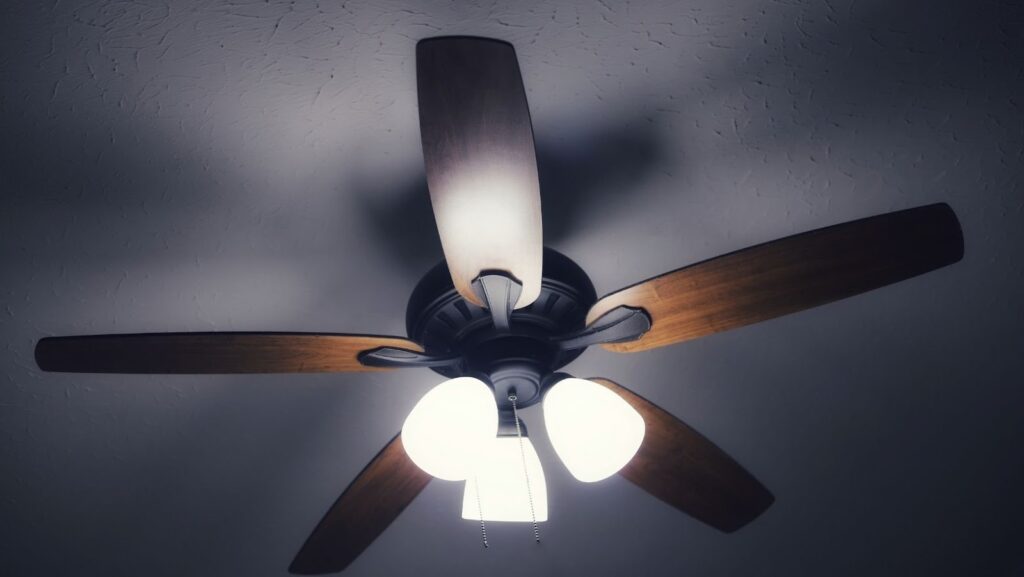Ceiling Fan Installation Made Easy

Ceiling fan installation may seem like a daunting task, but it doesn’t have to be! With a little bit of know-how and the right tools, you can easily install a ceiling fan in your home.
In this article, we’ll walk you through the steps of ceiling fan installation, so you can get your new fan up and running in no time. We’ll also provide some tips on how to select the right ceiling fan for your space. So, if you’re ready to take on the challenge of ceiling fan installation, read on!
What are ceiling fan and how does it works
A ceiling fan is a mechanical device that consists of blades which rotate on a motor, generating an airflow in a room. The rotating blades create a wind-chill effect, making the room feel cooler.
Ceiling fans are typically used in rooms where there is no air conditioning, or in rooms where air conditioning is not needed all the time. Ceiling fans are often used in living rooms and bedrooms.
What are the two types of ceiling fans
The two types of ceiling fans are those with blades that rotate in a clockwise direction, and those with blades that rotate in a counter-clockwise direction.
When selecting a ceiling fan, it is important to consider the direction of the blades. Clockwise rotation is typically used for cooling, while counter-clockwise rotation is typically used for heating. It is also important to consider the size of the room when selecting a ceiling fan. If the room is large, it will require a larger fan. If the room is small, it will require a smaller fan.
How to select the right ceiling fan for your space
When selecting a ceiling fan for your space, there are several things you should take into consideration. First, you need to determine the size of the room. Ceiling fans come in a variety of sizes, so it is important to select a fan that is appropriate for the size of the room. Second, you need to consider the style of the fan. Ceiling fans come in a variety of styles, so it is important to select a fan that matches the style of your space.
Third, you need to consider the ceiling height. Ceiling fans are typically installed on ceilings that are 8 feet or higher. If your ceiling is lower than 8 feet, you may need to purchase a flush-mount fan. Fourth, you need to consider the wattage of the fan. The wattage of the fan will determine how much power the fan uses. Lastly, you need to consider the price of the fan. Ceiling fans range in price from $50 to $500.
how to install a ceiling fan without existing wiring
If you don’t have existing wiring for a ceiling fan, don’t worry! There are a few options for installing a ceiling fan without existing wiring. The first option is to install a battery-operated ceiling fan. Battery-operated ceiling fans typically come with a remote control, so you can operate the fan without having to hardwire it into your electrical system. The second option is to install a solar-powered ceiling fan. Solar-powered ceiling fans are designed to be installed on roofs or in other sunny locations. The solar panels collect energy from the sun, which is then used to power the ceiling fan.
The third option is to install a wind-powered ceiling fan. Wind-powered ceiling fans are designed to be installed in locations where there is a strong wind blowing. The blades of the fan are powered by the wind, which turns the motor and generates an airflow. Installing a ceiling fan without existing wiring is possible, but it may be more difficult than installing a fan with existing wiring. If you are not comfortable working with electricity, it is best to hire an electrician to install the fan for you.

 How to Plan and Budget for Major Home Renovation
How to Plan and Budget for Major Home Renovation  Repairs to Make Before Selling Your Home
Repairs to Make Before Selling Your Home  5 Reasons to Upgrade Your HVAC System Before Winter
5 Reasons to Upgrade Your HVAC System Before Winter